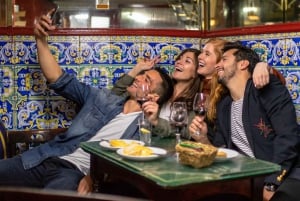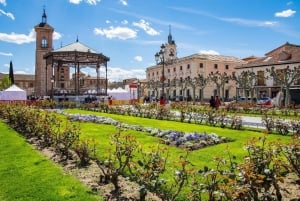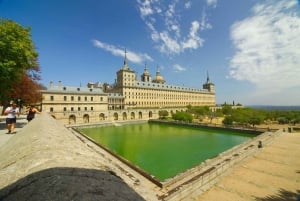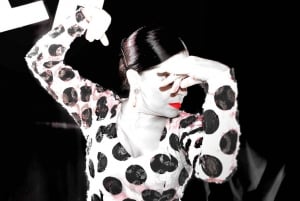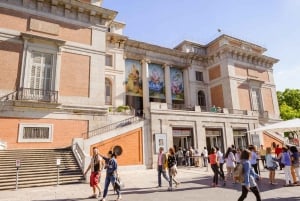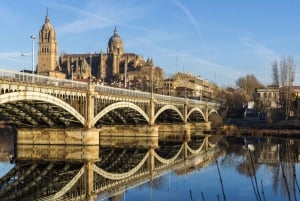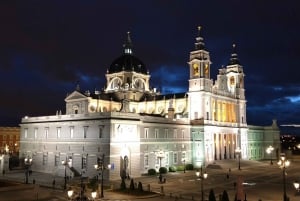Prado
Out of the many general measures laid out by King Carlos III to improve Madrid, one of them was to design and construct the set of buildings that now house the Museum del Prado.
It was originally conceived as a cabinet of Natural Sciences until his grandson, King Ferdinand VII, persuaded by his wife, Queen Mary Isabel, eventually turned it into a museum of paintings and sculptures. The museum was born with a dual purpose: firstly to open the collection of paintings to the public, and secondly to promote the valuable Spanish art collection on par with any country in Europe.
With the aim of promoting it, King Carlos III made an important donation of major works to form the backbone of the museum which was finally opened in 1819.
The Prado's collection is probably the largest and most prestigious in the world, and it houses a large collection ofSpanish, Italian,Flemish,French, Dutch and British paintings. Its collection consists of approximately 7,600 paintings, 1,000 sculptures, 4,800 drawings and 8,200 prints. Today the museum exhibits just slightly less than 1,000 pieces. The rest are scattered in various museums and institutions, and in its stores.
If you have just one hour, the museum suggests you 15 pieces
The Crucifixion by Juan de Flandes; The Knight of the hand on his chest by El Greco; Las Meninas by Velázquez; The Dream of Jacob by Jose de Ribera; The Shootings of May 3 by Francisco de Goya; The Cardinal by Raphael; Carlos I by Tiziano; The Immaculate Conception by Tiepolo; The Descent by Van der Weyden; The Garden of Earthly Delights by El Bosco; The Three Graces by Rubens; Portrait of Durer; Judith at the banquet of Olorfenes by Rembrandt; and the offering of Orestes and Pilades, anonymous.
If you have two hours, the museum suggests you 30 pieces.
The Crucifixion by Juan de Flandes; The Knight of the hand on his chest by El Greco; Las Meninas and the Spinners by Velazquez; Juan's dream by Murillo; Agnus Dei by Zurbarán; Hunting Still Life by Juan Sánchez Cotan; The Naked Maja and The Shootings of May 3 by Francisco de Goya; Still Life by Meléndez; The Annunciation by Fray Angelico; The Death of the Virgin by Mantegna; Christ died by Messina; The Cardinal by Raphael; Carlos I by Tiziano; The washing by Tintoretto; David by Caravaggio; The Immaculate Conception by Tiepolo; The Descent by Van der Weyden; The Garden of Earthly Delights by El Bosco; The passage of the lagoon by Patinir; Mary Tudor by Antonio Moro; The Triumph of Death by Briegel; Porter and Van Dyck by Van Dyck; The Three Graces by Rubens; Portrait of Durer; Judith at the banquet of Olorfenes by Rembrandt; The offering of Orestes and Pilades, anonymous; and Carlos I by Leoni.
If you have three hours, the museum suggests you 50 pieces.
Hunting of hares, Anonymous; The Crucifixion by Juan de Flandes; Santo Domingo de Silos by Bermejo; Auto faith, by Berruguete; The Trinity, The Adoration of the Shepherds and The Knight of the hand on his chest by El Greco; The triumph of Bacchus, The Surrender of Breda, Las Meninas and the Spinners by Velazquez; Juan's dream, by Murillo; Agnus Dei, by Zurbarán; The recovery of the Bay of All Saints by Maine; Hunting Still Life by John Sanchez Cotan; The Naked Maja, the family of Carlos IV, Saturn devouring a child and The Shootings of May 3 by Francisco de Goya; Still Life by Meléndez; Isabel La Católica signing her will by Rosales; Boys on the Beach by Sorolla; The Annunciation by Fray Angelico; The Death of the Virgin by Mantegna; Christ died by Messina; The Cardinal by Raphael; Carlos I and the bacchanalia of Andrios by Tiziano; Venus and Adonis by Veronese; The Washing by Tintoretto; David by Caravaggio; Noli me Tangere by Correggio; The Immaculate Conception by Tiepolo; Moses saved from the waters by Gentilecci; The Descent by Van der Weyden; The Garden of Earthly Delights, by El Bosco; The passage of the lagoon by Patinir; Mary Tudor by Antonio Moro; The Triumph of Death by Briegel; Porter and Van Dyck, by Van Dyck; The Adoration of the 3 wise kings and The Three Graces by Rubens; Portrait of Durer; The Parnassus by Poussini; Judith at the banquet of Olorfenes by Rembrandt; the offering of Orestes and Pilades, anonymous; Carlos I, by Leoni; salt onyx with gold horn, anonymous.
Open from 10:00 h to 20:00 h from Monday to Saturday
On Sunday and holidays from 10:00 h to 19:00 h


